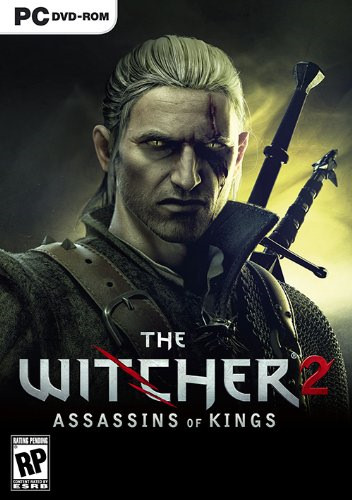The Witcher 2: Assassins of Kings Preview
-
Category: PreviewsHits: 27776

Article Index
Page 1 of 4
Firing up The Witcher 2: Assassins of Kings was like jumping into a long-awaited entry to a favorite book series for me, and having spent a good 15+ hours with the prologue and first act, I'm happy to report that CD Projekt RED has defied the odds and actually outdone themselves with this second installment. So how did I come to that conclusion? Let me tell you.The Visuals
Before I get into the more intricate details, I can't help but spend a little time on just how amazing the game looks. With the settings cranked up to "High" (the "Ultra" settings had some instability issues in the early build I played), the characters, buildings, and environments all look spectacular. The amount of painstaking detail that went into crafting the early battle landscapes, the La Valette Castle courtyard, the town of Flotsam and its wilderness, and other such areas is simply staggering. With the addition of even more realistic day/night transitions and weather effects (blurred vision during torrential rain, anyone?) than we saw in the first game, The Witcher 2 is easily the best-looking RPG I've ever played. And I say that without any hesitation.
Beyond the actual eye candy, it's also worth pointing out the diversity in the game's locations. Each of the game's villages and settlements is comprised of numerous residences, which Geralt can enter in search of NPCs (for conversation, trading, mini game, or crafting purposes) or any valuables that aren't nailed down. The game's residences and shops were clearly designed by hand, as most if not all of them possess different floor plans, a variety of different furniture, and decor that matches their functionality (I wouldn't normally mention all that but, hey, we're living in a post-Dragon Age II world). You won't ever get a sense of repetition when adventuring elsewhere in the game, either. For example, each one of the gnarled trees in the Flotsam wilderness looks dissimilar from the next and even a side area of Flotsam where a notable NPC named Loredo lives has a completely different feel than the rest of the town.
The team has stepped up their presentation efforts in the sequel, as well. The artistic style is similar to that of their debut effort, but the UI is much slicker (a categorized inventory, much-needed item comparison windows, and four groups of neatly organized skill trees) and the dialogue sessions don't possess any of the bizarre gestures and head-scratching translations that plagued early versions of the first game. And if CD Projekt RED intends to bring The Witcher 2 to consoles, you'd never know it from the UI, text arrangements, or keyboard/mouse control system - everything feels right at home on the PC.
Character Progression
Geralt's primary form of advancement is done through four separate talent trees (Training, Magic, Alchemy, and Swordsmanship) that house a total of 51 talents, each of which can have up to 2 points allocated to it. However, there are a few other lesser known progression options, including abilities (important skills like intimidation, persuasion, and haggling that are increased in level through use), knowledge (useful information gleaned from books, battles, and other means that grant combat bonuses and the like), and a slew of derived statistics (the in-game character sheet lists 37 different numeric scores) such as resistances and regeneration rates that you'll be watching closely to maximize your effectiveness.
Since you'll be spending the most time with Geralt's talents, though, I'll go into a bit more detail on those. The Training tree contains a half dozen basic proficiency talents such as "Dagger Throwing" and "Arrow Redirection" that you're required to take in order to expand Geralt's capabilities in the early game. Only after you've allocated several points into the Training tree will the Magic, Alchemy, and Swordsmanship trees unlock, therefore expanding your options considerably.


